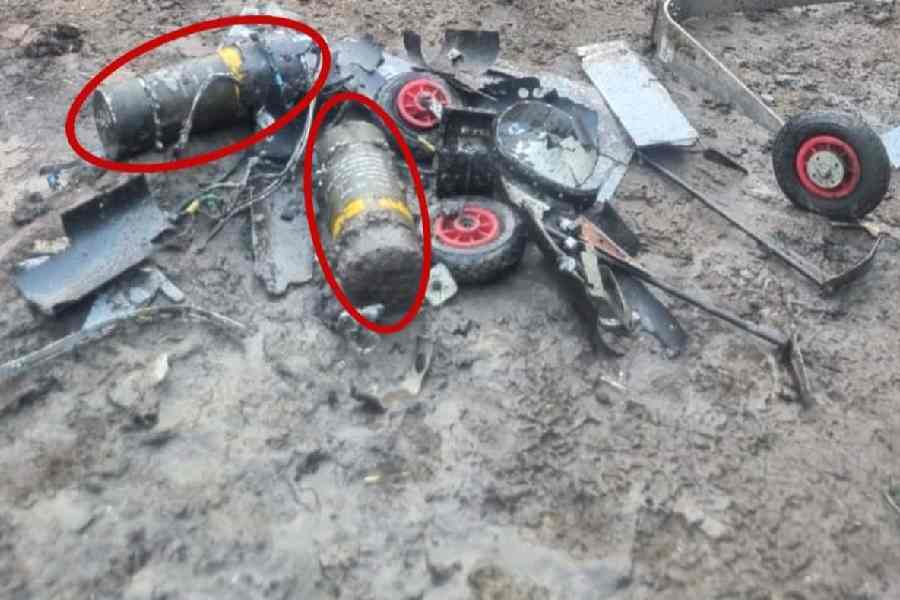
New Delhi, Jan. 8: A claim by a government research centre that a beetle had damaged the black pepper crop on an Andaman island has sparked a bitter dispute, with senior scientists accusing the institution of supporting and shielding sloppy research.
Two entomologists have in research journals accused scientists at the Central Island Agricultural Research Institute (CIARI), Port Blair, of raising the spectre of the pepper beetle, also called the pollu beetle, without adequate evidence that the pest occurs on the island.
India is the world's largest producer of black pepper. The pollu beetle feeds on leaves and bores into berries, causing them to crumble.
Entomologists say the pollu beetle has for decades been viewed as a problem primarily in the southern edge of the Western Ghats, affecting farms in Kerala, Tamil Nadu and Karnataka. They say its emergence elsewhere in India would have economic implications for the pepper crop there.
Scientists at the CIARI, one of 104 institutions under the Indian Council of Agricultural Research (ICAR), have denied the accusations. They have claimed "ample proof" of the pollu beetle on the island, and questioned the credentials of the two entomologists.
The CIARI scientists have cited a 1973 publication by two Port Blair scientists and a December 2016 field report by five scientists from the North Bengal Agriculture University to assert the pollu beetle exists in the Andamans.
The entomologists have challenged these claims and accused the CIARI scientists of displaying photographs of other species as the pollu beetle. They have asked why, if the beetle has existed on the island for over four decades, the CIARI hasn't a single specimen of the insect in its repository.
"Everyone makes mistakes - to err is human, but when an institution shields something wrong, it is troubling," said Srinivasan Ramani, an entomologist at the University of Agricultural Sciences, Bangalore, who has questioned the CIARI claims.
Ramani, in a commentary in Current Science, a journal published by the Indian Academy of Sciences, has urged the ICAR to tackle the problems of "sloppiness" and "misconduct" in its research institutions.
The trouble started with a 2011 research paper by CIARI scientists in the Indian Journal of Entomology claiming they had used a mix of neem cake and insecticide to control pollu beetle populations feeding on black pepper on an Andaman farm. The move, they said, led to an increase in the pepper yield during 2009 and 2010.
The paper caught the attention of K. Divakaran Prathapan, an entomologist at the Kerala Agricultural University, Thiruvananthapuram. Prathapan, an expert on beetles, says he was surprised to read that the pollu beetle was damaging pepper in the Andamans.
He wrote to the CIARI, requesting access to specimens and more information about the beetles they had fought. Prathapan also flew down to the Andamans and spent about three weeks there, surveying pepper and other crops on the island's farms. He found no evidence of the pollu beetle.
"It appears the CIARI scientists had mistaken damage caused by some other insects as having been caused by the pollu beetle," said Prathapan. "They don't even have any convincing photographic evidence of the typical damage caused by the pollu beetle."
Prathapan expressed his concerns to senior scientists at the ICAR and wrote an article in the Indian Journal of Entomology questioning the findings in 2015. It prompted a response from the CIARI scientists, who said "the occurrence of pollu beetle can be established only based on planned systematic study".
Senior CIARI scientists said that Prathapan's survey had been too short for him to spot the beetle, and that their efforts in 2009-10 had been aimed at controlling the pest's population and not at collecting specimens.
"The focus of our effort was (on) control to reduce damage to pepper berries," Sibnarayan Dam Roy, the CIARI director, told The Telegraph.
Dam Roy said that all the scientists involved in the project were "highly motivated and sincere" in their approach and were convinced they had controlled the pollu beetle.
"This (dispute) has unnecessarily brought a bad name to the institute and scientists who have invested years through dedicated and sincere work," he said.
"It is wrong for anyone to question them without knowing the facts. Why should what Prathapan says be taken as the truth; other scientists have seen the pollu beetle here."
Dam Roy has cited a report by the North Bengal Agriculture University (NBAU) team that spent about a week in the Andamans in October last year and collected specimens of the pollu beetle after surveys in several parts of the islands.
The NBAU scientists have in their report, presented at a symposium last month, said the pollu beetle incidence ranged from 5 to 18 per cent of the crops surveyed on the Andaman island, and 3 to 4 per cent of the pepper crop in Bengal.
The three NBAU scientists who made the trip to the islands declined to speak to this newspaper, saying they had submitted their report to the vice-chancellor and were not authorised to discuss the findings.
"We are convinced the pollu beetle occurs in the Andamans and in Bengal," Chirantan Chattopadhyay, NBAU vice-chancellor, said over the phone. "We have sufficient specimens as evidence."
But another entomologist at the CIARI said she was surprised at the NBAU's claim.
"I spent three years looking for pests on the island and did not come across the pollu beetle," said Thayumanavan Bharathimeena, principal investigator for an ICAR project on borer pests.
"The pollu beetle causes signature berry damage. I've never seen this on the islands. I'm convinced they have encountered some other beetle, probably a leaf-eating pest, but it's not the pollu beetle."
Two senior CIARI scientists who had been involved in the beetle control efforts on the Andaman island said the accusations by Prathapan and Ramani were baseless. "We have enough proof; we'll show it soon," one of them said.











